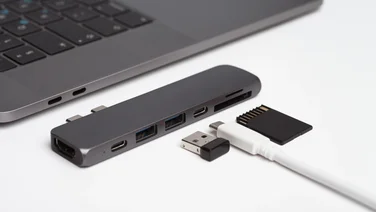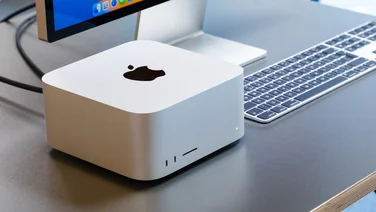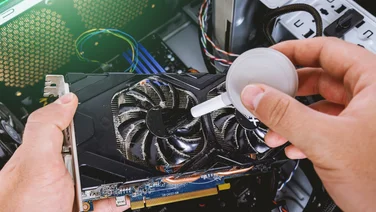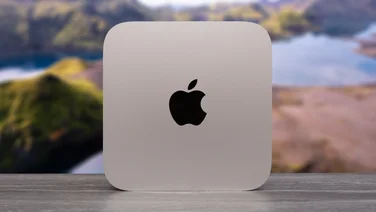To help us provide you with free impartial advice, we may earn a commission if you buy through links on our site. Learn more




In the world of mini-PCs, size really does matter. Zotac’s Zbox Plus Nano XS appears to be the front runner when it comes to the current round of miniaturisation wars. Measuring just 41x105x105mm, it’s by far the smallest PC we’ve ever reviewed. Despite its obvious lack of airspace and its minimal ventilation, it only gets warm, not blisteringly hot, while it’s running.

The PC comes with a VESA mounting plate (so you can easily attach it to the back of a TV or monitor), an HDMI cable, a media centre remote control and USB infra-red receiver, and a USB Wi-Fi dongle. That’s two USB devices you need to connect before you’ve even attached your mouse and keyboard. Fortunately, the Nano XS is slightly better equipped than some of its rivals.
It has one dual-purpose USB2/eSATA port at the front, a multifunction card reader that can handle MMC, Memory Stick PRO and SDXC cards, and 3.5mm microphone and headphone jacks. At the back, there are two USB2 ports in addition to a Gigabit Ethernet port and a HDMI port, which is the XS’s only graphics output.

There are also two USB3 ports, but if you’re going to use Windows on the PC, you won’t be able to use them until you’ve installed the operating system and the USB3 driver. The driver is provided on a disc, as are the graphics chipset, audio and Wi-Fi drivers. This means that the easiest way to install the drivers is to copy them to a USB disk using another PC or connect the mini PC to the internet and download them from Zotac’s website, unless you have an external DVD drive. We were pleased that the Ethernet port worked without extra drivers. Sadly, the same wasn’t true of the Wi-Fi dongle. Needless to say, we’d have preferred a natively supported Wi-Fi dongle.
The Zbox doesn’t look as if it should be upgradeable, but you can open it up and change its memory. It has one slot for DDR3 laptop RAM, currently occupied by a 2GB 1,333MHz module, and a hard disk, which is a 60GB solid-state mSATA module. This is about the same size as the memory, so if you want to upgrade you’ll have to replace it with the same kind of disk. Although it isn’t a major performance boost, the solid-state drive had a positive effect on the PC’s boot time and overall responsiveness.

The XS’s AMD E-450 processor is one of the better ultra-low-power chips around at the moment, and we got an overall score of 13 in our benchmarks. That’s enough to browse the web and watch videos, but you won’t want to do much more than that. The integrated AMD Radeon HD 6320 graphics processor supports DirectX 11, but it isn’t really up to gaming, as shown by its failure to run Dirt 3 at our standard laptop test settings. Even so, the E-450 processor’s onboard graphics should be able to cope with relatively undemanding games, such as Portal, at minimum quality. All 720p and most 1080p video files played smoothly, but the system was unable to handle our full Blu-ray rip.
At £299, the XS is typically priced for a mini PC. Its mSATA hard disk provides less storage capacity than you usually get from similar systems with a traditional hard disk, but its faster access speeds make up for this. If you really want a computer that consumes the bare minimum of space and can run most applications, this system is a perfect match. However, the Lenovo IdeaCentre Q180, which costs £50 more but comes with Windows 7 Professional, a Blu-ray drive and a 750GB hard disk, is a better buy if you want to run Windows on your mini PC.





